Domestic and family violence is not a big problem in Australia
Fact

The sad reality is that domestic and family violence is common in Australia and is under-reported.
One in four women have experienced at least one incident of physical or sexual violence by a male partner.1
Non-physical violence is also common. To find out more about the different types of domestic and family violence, see what is domestic and family violence?
Men are just as likely to be victims of domestic and family violence as women
Fact

Men can experience violence as victims, and most men do not use domestic and family violence. Women can also use violence in relationships.
Research shows that domestic and family violence is most often done by men against women.
Men are most likely to experience violence by a stranger in a place of entertainment, while women are most likely to experience violence by someone they know in their home.2
Research shows that domestic and family violence also happens in same-sex relationships.3
Domestic and family violence is always physical
Fact

Domestic and family violence involves the abuse of power and control over a person. This may be done through behaviours that are not always physical.
For example, abuse can be verbal, psychological, financial, sexual or spiritual. It can include isolating a person from their friends and family, destroying their property, threatening or harming animals or stalking a person.
To find out more about the types of domestic and family violence, see what is domestic and family violence?
Domestic and family violence only happens in some cultures or ethnic communities
Fact

Research shows that domestic and family violence happens in all parts of society, regardless of race, gender, age, sexual identity, socio-economic status, location, culture or religion.
However, some groups of people are more vulnerable to the experience and effects of domestic and family violence than others, because of compounding social inequalities, discrimination and other disadvantages they face.
For example, Aboriginal and Torres Strait Islander people4 and women with a disability5 experience higher rates of domestic and family violence.
Women from diverse cultures and backgrounds can face more difficulties reporting domestic and family violence or getting help.6 Language barriers, social isolation, pressure from extended family members and uncertain citizenship can make it difficult for them to understand their rights and access support.
Choose your State or Territory for services that can help with visas and immigrationACTNSWNTQldSATasVicWA.
Also see what happens to a person’s visa when there’s domestic and family violence?
Domestic and family violence is less of a problem in rural or regional Australia
Fact

Domestic and family violence happens everywhere. Studies suggest that women living in rural and remote areas often experience greater severity of physical abuse, greater frequency of violence, and remain trapped in abusive relationships longer.7 Women in rural and remote areas report high rates of domestic and family violence.8
Victims may find it harder to leave because they are geographically or socially isolated, have less access to support and services and have fewer options for transport and accommodation.
It can also be difficult to leave when living on a farm, as this may mean a person needs to leave their animals, income, assets and community.
Domestic and family violence is usually a one-off incident at an emotional time or when a relationship ends
Fact

Although one-off incidents do occur, domestic and family violence is usually an ongoing pattern of behaviour. It rarely happens one time only.
Domestic and family violence is often a way of controlling a victim and may involve what is known as a ‘cycle of abuse’.
However, not all people experience the cycle of abuse.
The cycle of abuse is a theory developed in 1979 by Dr Lenore Walker. It explains a repetitive pattern of behaviour in an abusive relationship which makes it hard for a person to leave. It moves through the following phases:
1. Explosion – an incident of domestic and family violence occurs.
2. Remorse – this may involve the person who used violence apologising, making excuses or promises, blaming the other person or denying or minimising the violence.
3. Honeymoon – this is a time where there is no violence and things seem calm.
4. Build up – the person who uses violence may start nit-picking and standing over the other person. Small incidents start and tension builds. The person experiencing violence becomes scared and withdrawn.
This cycle then repeats itself.
Sometimes, as the cycle repeats, the types of violence become more severe, and the time it takes to go through the cycle gets quicker.
Reporting domestic and family violence will make matters worse
Fact

Victims often fear that if they report violence or take legal action, it will make the violence worse.
Although, court proceedings can be a high risk time for victims of domestic and family violence, reporting violence can also be an important step in stopping violence and getting protection.
If you are worried about reporting, it’s important to talk to a domestic and family violence support service like 1800 RESPECT. They can help you make a plan about how and when it may be safer to report or take legal action.
Reporting to police can be important. Police may apply for a Domestic Violence Order to protect you or they may charge a person who has used violence with a criminal offence. Research shows that police assistance and Domestic Violence Orders can help to reduce violence.9
Children are not affected by domestic and family violence
Fact
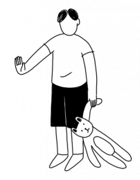
Children can be seriously harmed by domestic and family violence. This can happen when a child directly experiences domestic and family violence as well as when a child is exposed to violence against a family member.
If a child is exposed to domestic and family violence, it can:
• cause immediate trauma and psychological harm
• put them at greater risk of physical harm
• have long-term effects on their mental health
• increase the chances of behavioural problems
• cause social and learning difficulties
• increase the chance of them using or experiencing violence in their adult relationships.
Not all children exposed to domestic and family violence are affected in the same way.
To find out more, see how domestic and family violence affects children.
Victims provoke domestic and family violence
Fact
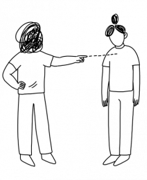
No one asks for or deserves to be abused. People who use violence may try to shift the blame to the victim by telling them that they made them angry or jealous.
Most victims of domestic and family violence do everything they can to avoid violence and even try to change their own behaviour in the hope that it will stop the abuse. This will not stop the violence because they are not the cause of the violence. The cause of the violence is the violent person who is trying to maintain power and control over the victim.
Domestic and family violence is a private matter
Fact

Domestic and family violence should not be treated as a private matter.
It can be a serious crime that may lead to injury or death.
Domestic and family violence is a leading preventable contributor to death, disability and illness in women aged 15–44.10
41% of homicides across Australia, are because of domestic and family violence.11
Domestic and family violence affects the whole community and costs Australia $22 billion each year.12
By treating domestic and family violence as a private matter, we ignore how serious it is and make victims less likely to speak out and get help.
If victims didn’t like the abuse, they would leave
Fact

No one wants to be abused or controlled. There are many complex reasons why a person may be unable to leave an abusive relationship.
Many victims of domestic and family violence want to leave, but they can’t because of things like:
• they are afraid
• they fear it may make the violence worse
• they don’t have anywhere to go
• they don’t have money to support themselves or their children
• they don’t have friends or family to go to for help
• they are worried about the safety of their children, family or pets
• they don’t trust the police or they are scared of going to the police for help
• they are worried about what other people might think or they feel ashamed
• they have experienced violence for so long that it feels normal
• they think no one will believe them
• they love the person who has used violence or want the relationship to work
• they want to keep their family together for their children
• cultural or religious reasons.
A person who uses violence may also use different intimidating and manipulative tactics to prevent a victim from leaving.
Victims are most at risk when they try to leave or just after they leave the relationship.
These barriers may be too big for a victim to ever overcome, or they may explain why some victims leave and return to an abusive relationship many times before they leave for good.
For services that can help support a person experiencing domestic and family violence, see get help.
Domestic and family violence will stop after separation
Fact
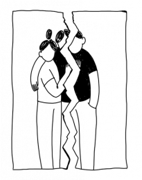
If a victim leaves a relationship, the person who uses violence may see this as a direct threat to their control over the victim.
Research shows that one of the most dangerous times is in the months after separation.
A person who used violence in the relationship may use many tactics to reassert control over a victim. For this reason, it’s important to get help and stay safe.
Domestic and family violence does not include sexual assault
Fact

The law recognises sexual assault in a relationship or by a family member as a form of domestic and family violence. It is a serious criminal offence.
Evidence shows that many victims don’t report, or even disclose sexual assault, even when they report other forms of violence.13
Choose your State or Territory for sexual assault servicesACTNSWNTQldSATasVicWA.
Women often make false or exaggerated claims of domestic and family violence to get an advantage in court cases about parenting
Fact

There is no research to show that women make false or exaggerated claims of domestic and family violence to get an advantage in court cases about parenting.
Domestic and family violence is under-reported. People who have experienced violence are often reluctant to talk about it for many reasons, including fear of not being believed.14 Some research suggests that people who have used violence often deny or minimise domestic and family violence.15
It is important to take domestic and family violence seriously including during court cases about parenting or when families are separating. Separation and court proceedings are high risk times for domestic and family violence. Sometimes the first time a person feels safe to talk about domestic and family violence is after they have left a relationship, and when they are trying to sort out arrangements for their children.
Domestic and family violence is caused by things like alcohol or drug use, anger management issues or money problems
Fact

The use of alcohol or drugs, anger management issues or money problems may be triggers for domestic and family violence, but they are not the cause.
People who use violence often blame things like this for their violence.
However, they are often still violent to the victim even if they are sober or when money is less of a problem.
It is uncommon that anger management is the real issue. Often the person using violence will direct their anger at the victim, but is able to control their behaviour in front of friends, colleagues, other family members or strangers. This is because domestic and family violence is usually about power and control and not just anger.
There are also many families where things like alcohol, drugs and money are problems but yet there is no domestic and family violence.
Domestic and family violence is more common of a problem in “straight” relationships
Fact

ACTNSWNTQldSATasVicWAPeople who identify as lesbian, gay, bisexual, trans, intersex or queer (LGBTIQ+) experience domestic and family violence from a partner at similar rates as those who identify as heterosexual.16
LGBTIQ+ people may be less likely to identify behaviours as domestic and family violence or seek help.
They can face additional barriers in reporting domestic and family violence because of heterosexual stereotypes and discrimination, and can experience unique forms of violence such as threats of being ‘outted’ to their work or family.
Choose your State or Territory to find LGBTIQ servicesACTNSWNTQldSATasVicWA.
Most elder abuse happens in nursing homes
Fact

Elder abuse is estimated to affect between 2 – 10% of older Australians.
Adult children are the most common perpetrators.17
The most common forms of elder abuse are psychological and emotional abuse and financial abuse. For example, adult children trying to take their parent’s money or home.
Also see, what is elder abuse?
Choose your State or Territory to find older person’s servicesACTNSWNTQldSATasVicWA.
Domestic and family violence is a part of Aboriginal or Torres Strait Islander cultures
Fact
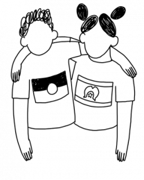
It is important to acknowledge that domestic and family violence is not a traditional part of Aboriginal or Torres Strait Islander cultures.
However, the history of colonisation, dispossession of land and culture, racism and the removal of children from their parents has created intergenerational grief and trauma. It has led to higher rates of poverty, unemployment, incarceration, substance abuse and social disadvantage among Aboriginal and Torres Strait Islander communities.
The intersection of these complex factors with gender inequality means Aboriginal and Torres Strait Islander women experience higher rates and more severe forms of domestic and family violence compared to other women.18
Compared to other Australian women, Aboriginal and Torres Strait Islander women are 32 times more likely to be hospitalised as a result of domestic family violence,19 and twice as likely to be killed by an abusive partner.20
Research suggests that up to 90 per cent of violence experienced by Aboriginal and Torres Strait Islander people goes unreported.21 Underreporting can be due to mistrust of police or other services, concerns over children being removed by child protection authorities, fear of imprisonment and racial discrimination. Underreporting is particularly common in remote areas, where there are a limited range of services and a lack of anonymity.22
Choose your State or Territory to find Aboriginal and Torres Strait Islander Legal ServicesACTNSWNTQldSATasVicWA.
Women with a disability are less likely to experience domestic and family violence
Fact
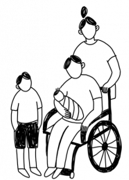
People with a disability are twice as likely to experience physical or sexual violence by a partner, compared to people who do not have a disability,23 and often this violence goes unreported.24
Women with disabilities can experience forms of domestic and family violence that are particular to their increased dependency. The may face financial abuse, social abuse, reproductive abuse, or withholding of food, medication or disability support aids.
Their experiences of violence also tend to occur over a longer period of time, and result in more serious injury than for women without a disability.25
Choose your State or Territory to find disability servicesACTNSWNTQldSATasVicWA.
Quick Exit
© Copyright National Legal Aid 2019. All rights reserved. All illustrations by Frances Cannon.